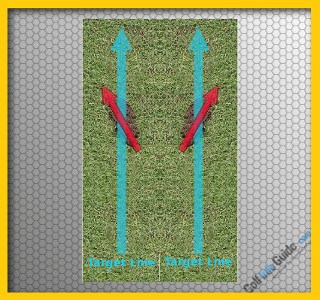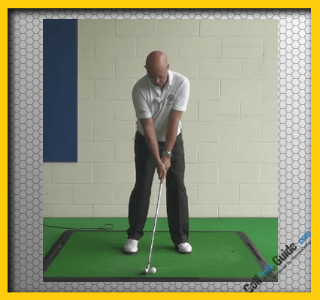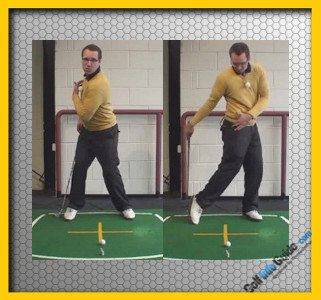Top 3 Tips On Why It’s Best Hitting Down on the Ball
How many sports in the world, that involve a ball, are played with the ball sitting still? And if you touch or move the ball ever so slightly you get a penalty? Just golf. Billiards is a game rather than a sport but requires similar concentration to golf. For years golf was viewed upon as being a game to pass time. But since Tiger Woods came along, the once Upper Class game transitioned into an Olympic Sport. Believe it or not, golf is providing more annual injuries and work for massage therapists and chiropractors than Football, Baseball and Hockey combined.
What this means is that Golf requires athleticism and sound biomechanics. Many professionals are very powerful ball strikers and have amazing strength through impact. They have near perfect fundamentals and the one thing they all share in common is hitting down on the ball. This is particularly evident with their short to mid irons.
When we refer to hitting down on the ball in golf, we mainly want to focus this technique on our irons. For hybrids, woods and the driver it’s important to create width and swing shallow through the ball. But with our irons, to produce the most amount of spin and offer the best chance to compress the ball, we need to strike down on the ball. It’s imperative to hit the ball first and ground second. If we have problems accomplishing this on any shot, we can see a loss in distance and accuracy.
The following are tips to help you hit down on the ball and assist in hitting your irons better with more consistent results.

Chalk lines are a staple for many player’s practice session. We often see them on putting greens. Chalk lines can be purchased at most hardware stores and are a great tool to keep in your bag for practice sessions. They assist with alignment and swing path for putting and can help with hitting down on the ball while practicing on the range. The following drill is made to give you instant feedback with your irons on how consistently you hit the ball first and the ground second. Take the chalk line and run it for about 3 feet in a vertical line away from you. Next, you will place a ball a couple inches from the start of the line. Hit a shot and see where your divot begins. Ideally we would like to see the divot start just past the line. This means the ball was contacted first and should have resulted in a solid strike. If the divot starts anywhere behind the line, you’ve made a fat or heavy shot. If there’s no divot, one would assume it was struck thin or very poorly. Keep using this drill until you consistently see your divots start after the chalk line.

Tip #2 Ball Back in the Stance
Many golfers when attempting to hit low shots or punch shots almost always move the ball back in their stance. This is because it helps to de-loft the club and compress the golf ball. If you’re looking to start hitting down on the ball more consistently, try practicing with the ball back a little further in the stance. The trick to this drill is to ensure the club shaft is leaning towards the target and your weight is favoring your front foot. Almost instantly this will help you swing the club a little more upright causing a steeper angle of attack and a descending strike on the ball.

The front foot drill refers to the left foot for right handed golfers and right foot for left handed golfers. This is another great drill to help you swing more upright with a steeper angle of attack at impact. What you will do is take your address position with a 9 iron. Make sure to move the ball up in the stance a few inches so it’s closer to the heel of your front foot. Next, move your back foot straight back and onto its tip toe. The back foot should be a few inches behind the heel of the front foot with 85% of your weight on the front foot. From here you will make a 50% swing to start. The key is to keep the majority of your weight forward. You can achieve this by ensuring your left shoulder (right shoulder for left handed golfers) rotates down instead of rotating around. In the downswing and follow through all you need to focus on is balance. This drill not only helps with hitting down on the ball but also assists with balance and weight transfer which are imperative to consistent ball striking.






